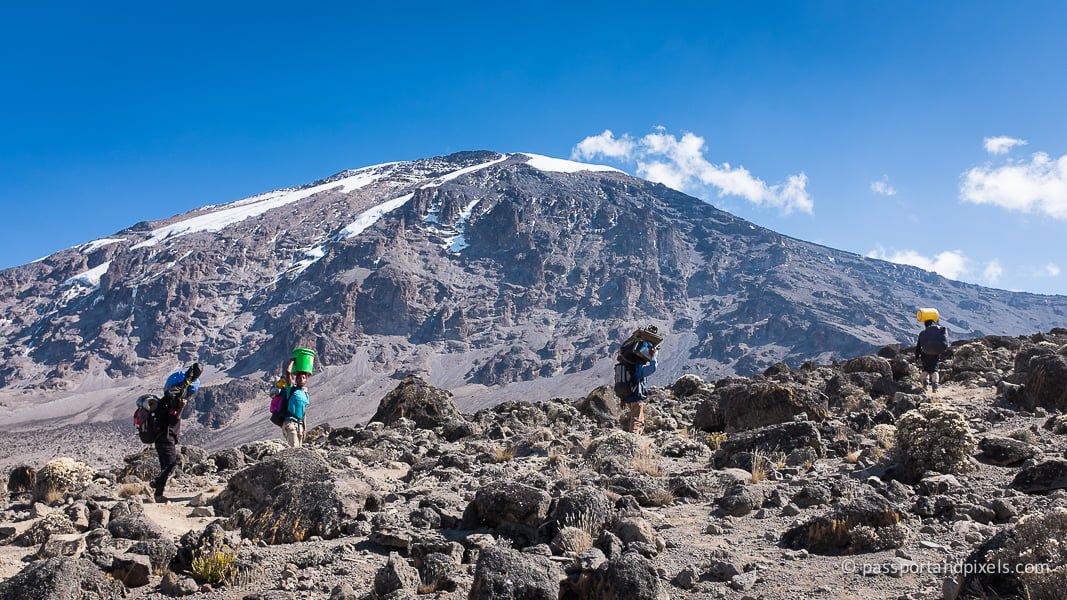Climbing Mount Kilimanjaro is a dream for many adventure seekers, yet the question of whether you should undertake this journey solo invites much debate. The idea of standing on Africa’s highest peak alone is undoubtedly thrilling. However, is the thrill worth the risks associated with solo endeavors?
Considering Kilimanjaro’s altitude and the physical demands of the trek, safety becomes paramount. Historically, altitude sickness and sudden weather changes have posed significant threats. Recent statistics show higher success rates for guided groups, clearly indicating the value of professional support.

Assessing the Risks of Solo Hiking on Mount Kilimanjaro
Hiking Mount Kilimanjaro solo can be thrilling, but it comes with unique dangers. The weather plays a major role; sudden changes can be daunting and disorienting. Extreme conditions like heavy rain or snowfall can hamper your progress. Without a guide, the risks increase considerably. Altitude sickness is another major concern, affecting oxygen availability at higher elevations.
Proper acclimatization is vital to success on Kilimanjaro, yet this can be harder to manage alone. While some trekkers may push through to reach the summit faster, this increases altitude sickness risk. Symptoms can include headaches, nausea, and even life-threatening conditions. According to some articles, taking your time to adjust to high altitudes is critical. Guided hikes often include staged acclimatization for safety.
Emergency situations are more challenging to handle when you’re alone on the mountain. Without a team, you might have limited access to help in an emergency. Issues such as injuries, sudden illness, or getting lost become more perilous. Having a GPS or a well-laid-out plan can make a significant difference. However, solo hikers miss the immediate support a group or guide offers.
Navigational skills are another aspect solo climbers must excel in. Kilimanjaro has various trails, and staying on course is essential. Trails can become confusing, and weather conditions can make navigation difficult. According to the article here, being well-prepared is non-negotiable if hiking alone. While the adventure is appealing, the risks shouldn’t be underestimated.
Examining weather conditions and altitude challenges
Weather conditions on Mount Kilimanjaro can be highly unpredictable. You may start your trek in warm, sunny weather only to face rain, wind, or snow higher up. The mountain has several climatic zones, each with its own challenges. Proper gear is essential to handle these shifts. Lack of preparation can leave you vulnerable to hypothermia or heat exhaustion.
Altitude challenges are significant when climbing Kilimanjaro. At higher altitudes, the air becomes thinner, making it difficult to breathe. This can lead to altitude sickness, which can cause dizziness and shortness of breath. According to some trekking articles, altitude sickness affects many climbers on this mountain. Proper acclimatization is key to minimizing these risks.
Understanding the symptoms of altitude sickness is essential for any climber. The early signs include headaches and nausea, but they can escalate. If left untreated, more severe conditions like High Altitude Pulmonary Edema (HAPE) or High Altitude Cerebral Edema (HACE) can occur. These are serious and require immediate action. Monitoring your health can make all the difference.
Being aware of these challenges helps in better planning and safer trekking experiences. Solo hikers need to be extra cautious and well-prepared. Weather and altitude can completely alter your trek’s dynamics. Having a solid plan and safety measures in place is crucial. This is especially important when tackling the unpredictable elements of Kilimanjaro.
Essential Preparations for a Solo Climb
Preparing for a solo climb on Mount Kilimanjaro involves meticulous planning. Ensuring you have the right gear is a top priority. Items include durable hiking boots, weather-appropriate clothing, and high-quality sleeping bags. Also, carrying a reliable map and GPS device is crucial for navigation. Invest in good equipment to avoid preventable mishaps.
Physical fitness is another vital aspect. Training your body to endure long hikes and high altitudes is necessary. Cardiovascular exercises, strength training, and endurance workouts help build stamina. Starting your training at least three months in advance is recommended. A well-conditioned body will cope better with the challenges of climbing.
Knowing the route and understanding Kilimanjaro’s terrain adds to your preparation. The mountain has several trails, each with its own difficulty level. Studying these paths ensures you pick the best one for your skill set. You’ll also need to know landmarks and checkpoints. Familiarity with the route reduces the risk of getting lost.
Lastly, mental preparation is as important as physical training. Climbing alone can be mentally taxing due to isolation and stress. Developing mental resilience helps you stay focused. Techniques such as meditation and visualization can be useful. Cultivating a positive mindset will keep you motivated during the climb.
Alternatives to Solo Hiking on Mount Kilimanjaro
If solo hiking on Mount Kilimanjaro seems too risky, consider joining a guided group. Guided treks offer expert navigation and increased safety. Professional guides are familiar with the terrain and can provide invaluable advice. You’ll also have support in case of any medical emergencies. This option allows you to focus more on the experience and less on the logistics.
Traveling with friends or family is another excellent alternative. This option promises a more intimate and personalized journey. Having familiar faces around can boost your morale and make the trek more enjoyable. You can share responsibilities, such as setting up camp and cooking. This collaboration lightens the load and enhances the experience.
You could also join a trekking club or group organized by adventure companies. These groups often include like-minded individuals who share your enthusiasm for hiking. Trekking clubs usually have scheduled trips and group discounts. It is an excellent way to meet new people while ensuring you are not alone on the mountain. The camaraderie built during these trips can be rewarding.
For those seeking a unique experience, hiring a local guide from Tanzania can be a great option. Local guides bring knowledge of both the mountain and its cultural significance. Their expertise can significantly enrich your trekking experience. Additionally, hiring local guides supports the community economically. They can introduce you to hidden gems that might be overlooked in a solo journey.
Partnering with a tour group tailored for varying skill levels is another viable choice. Different tours cater to beginners, intermediate, and advanced hikers. This ensures you are part of a group that matches your skills and pace. It’s not only safer but also more enjoyable when everyone’s ability aligns. This specialized approach can make the climb more comfortable and fun.
Key Takeaways
- Solo hiking on Mount Kilimanjaro is generally not recommended.
- Unpredictable weather conditions pose serious risks to solo hikers.
- Altitude sickness is a common issue on the mountain.
- Hiring a guide can significantly improve safety and experience.
- Joining a group ensures better support during the trek.

